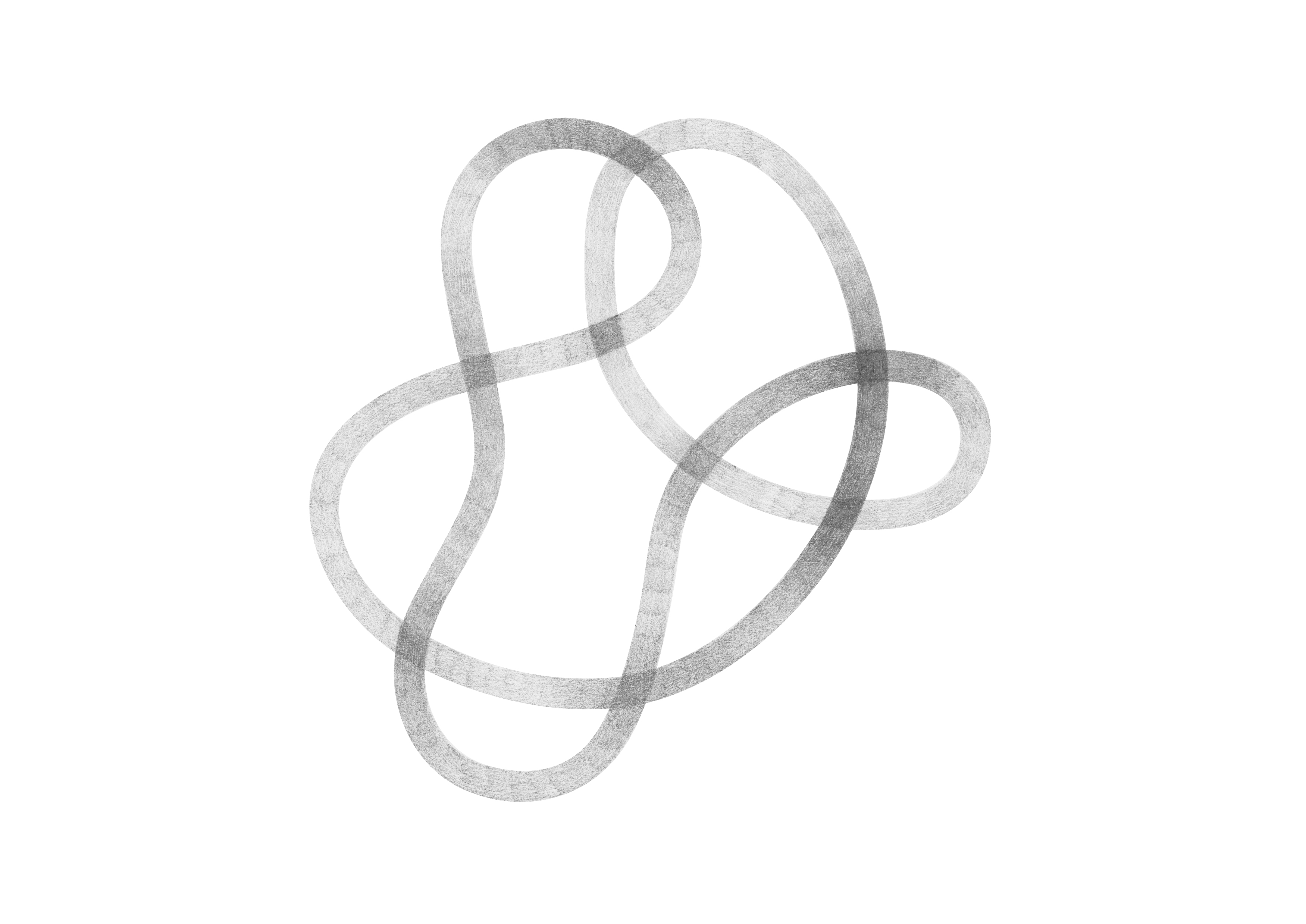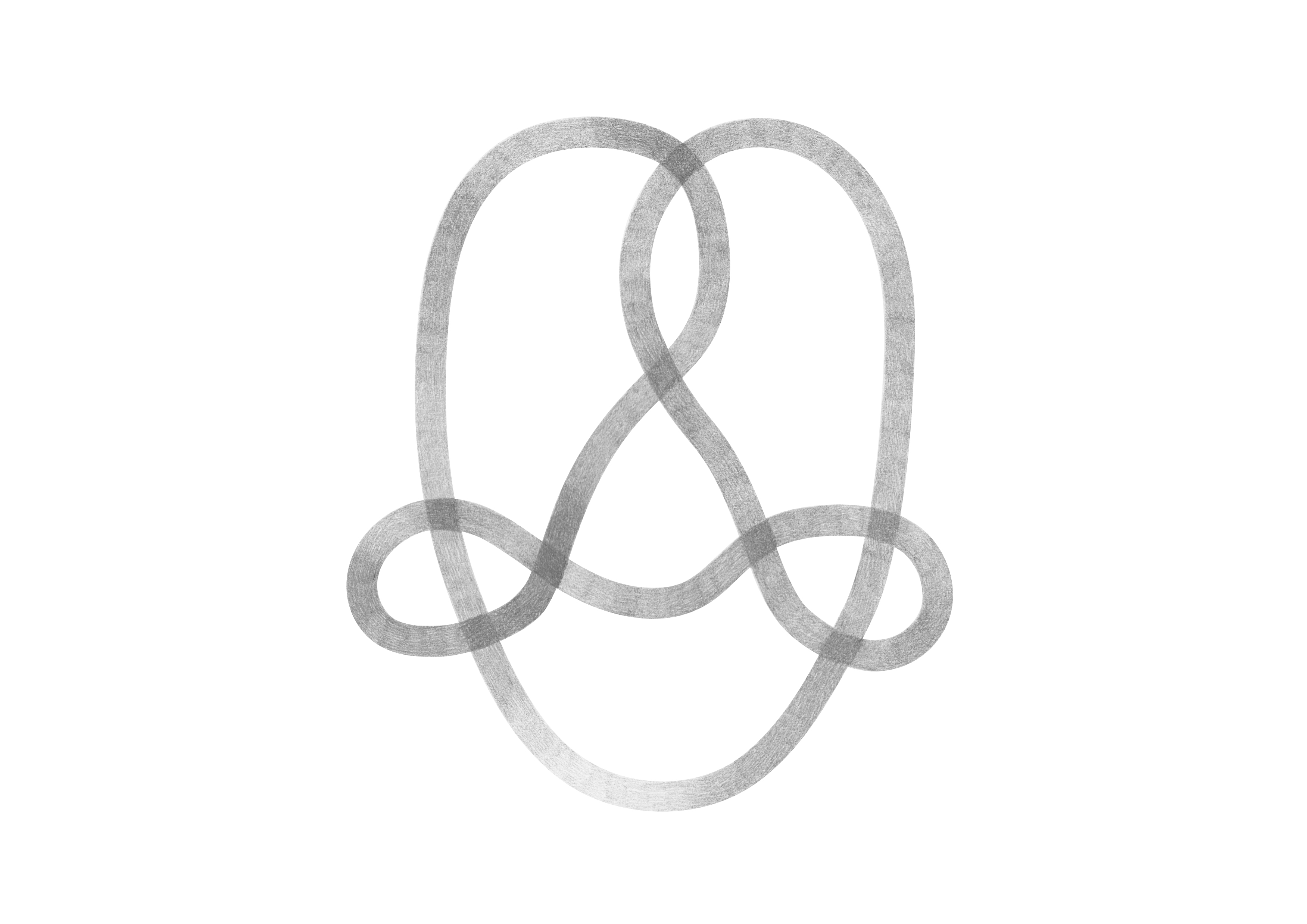1867
A note from Peter Guthrie Tait scribbled on an envelope asks an unknown recipient "Can't you come on Monday the present at the performance? An elliptical hole gives the rings in a state of vibration!!!"
In a room, thick with smoke, Tait and William Thomson (Lord Kelvin) are conducting an experiment to test the German physicist Hermann von Helmholtz's theory, that closed vortex lines in a fluid remain stable forever. Tait is using a box that emits smoke made from a pungent mixture of ammonia solution, salt and sulfuric acid. He taps the back of his makeshift vortex cannon, and thick rings he later describes as looking "like solid rings of India rubber" waft from a hole drilled in its front. Thomson develops a theory that each smoke ring is structured around knots in the ether, a space-filling substance believed to transmit matter. Consequently, Tait begins to tabulate possible forms of mathematical knots.


Knotworks
Knotworks are visualisations of the topology of our small, humble digital network of eight home servers. Each Knotwork drawing is of a mathematical knot with eight crossings, each crossing representing a node of the network. The points where the parts of the loop overlap can conceal parts contained, like the internal sections of klein worms. When unravelled, the knot is a continuous loop, and the links (edges) and the nodes (vertices) are the same.